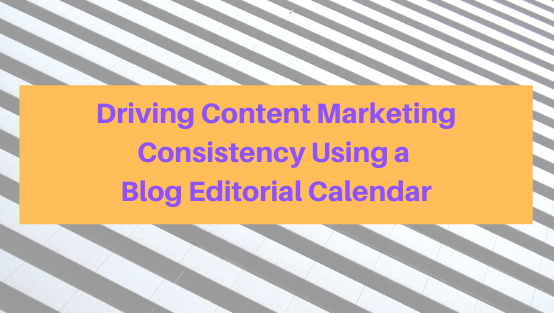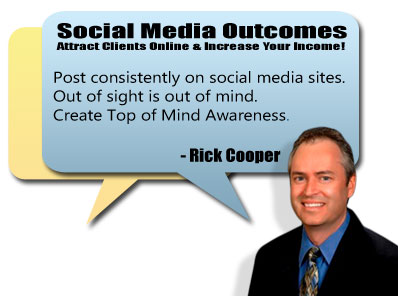Oh my goodness, it’s sad to see how speakers and coaches start a blog and then fail to post on a regular basis. Here’s the thing: people are watching you. Your current clients are watching, your prospective clients are watching and your Joint Venture partners are watching. Are they happy with what they see? Or are they disappointed with you?
Having a great blog messaging strategy in place is essential to your content marketing strategy for positioning you as an expert on your topics, promoting your events and engagements, and simply adding value to your brand.
So, it follows that you’ll want to be consistent with your posting, writing about fresh, valuable topics on a regular basis. The best way to drive consistency is by using a blog editorial calendar.
Creating an Editorial Calendar Using a Spreadsheet
A simple way to keep track of your editorial calendar is using a spreadsheet. Programs like Excel and Google Sheets are easy-to-use, and cost little to nothing. Start labeling the columns in your spreadsheet, including essentials like title of article/blog post, subject/purpose, keywords, Call to Action (CTA), and if it was published or not. This way, you’ll also have the flexibility of adding blog topics in advance as you brainstorm them.
In other words, your editorial calendar is a planning tool for future blog posts, and it’s also a history for your past blog posts.
Scheduling Topics on Your Calendar
The next thing you’ll want to consider is the scheduling of your blog posts. You have all these ideas, but how do you decide which come to fruition first? Planning is important and you need to consider and select topics that you are passionate on writing about.
Something you might think about are the important dates you have coming up. If you have a product launch or event, schedule blog posts specifically covering this topic leading up to the date in question. Similarly, take into account upcoming holidays or current industry hot topics and schedule blog content to be published accordingly. For example, maybe you decide to promote National Speakers Day, so naturally you’d want to schedule the post to be published a week or two before that date.
Tracking the Progress of Your Blog Posts
The advantage of keeping up with an editorial calendar is that you have a physical document or spreadsheet your team can use for reference. Make sure your whole team of writers has access to the document and are updating it regularly as they work on or publish blog posts.
If you find your team falling behind, here are a few tips to get back on top of the game:
- Examine all your posts and determine which ones can be moved further down the line; if you included a bunch of topics after a brainstorming session, look to see if any of those can be pushed back to a later date.
- Focus on writing and publishing the posts that are due soon or are specific to certain dates like product launches or reminders about events you’re speaking at. And that includes commitments you have made to your Joint Venture partners to support them.
Participating in a Blog Challenge
Blog Challenges are popular, fun ways to encourage you to publish more blog posts and force yourself to be consistent. If you’ve decided to participate in a blog challenge, the first thing you’ll want to do is design your posting schedule. If you’re participating in a thirty-day challenge, for example, make sure you have all thirty blog posts listed in your editorial calendar and labeled as such. Secondly, you’ll want to have the blog posts done at least the day before they’re due to make sure they get posted on time.
Remember that WordPress allows you to schedule your blog posts to publish on a future date and time. So, get ahead of the curve and schedule a few blog posts so you can keep on track.
A good strategy to keep up with your Blog Challenge is to set aside time in your schedule to write. If you know how long it takes you to outline and/or write blog posts, set aside that amount of time and stick to it.
For example, you might find it takes you a half hour to write a 200 word blog post or 90 minutes to write a 600 word blog post.
Overall, a blog editorial calendar is the easiest way to collaborate, update, and keep track of your blog post schedule while staying consistent in driving your content marketing strategy.
So, get started now and create a Blog Editorial Calendar. And be sure to publish your next blog post within 7 days. Can you commit to that?
Now it’s your turn! Please comment below with your own tips and best practices. And feel free to post if you want to share a commitment.




Connect with me Online: